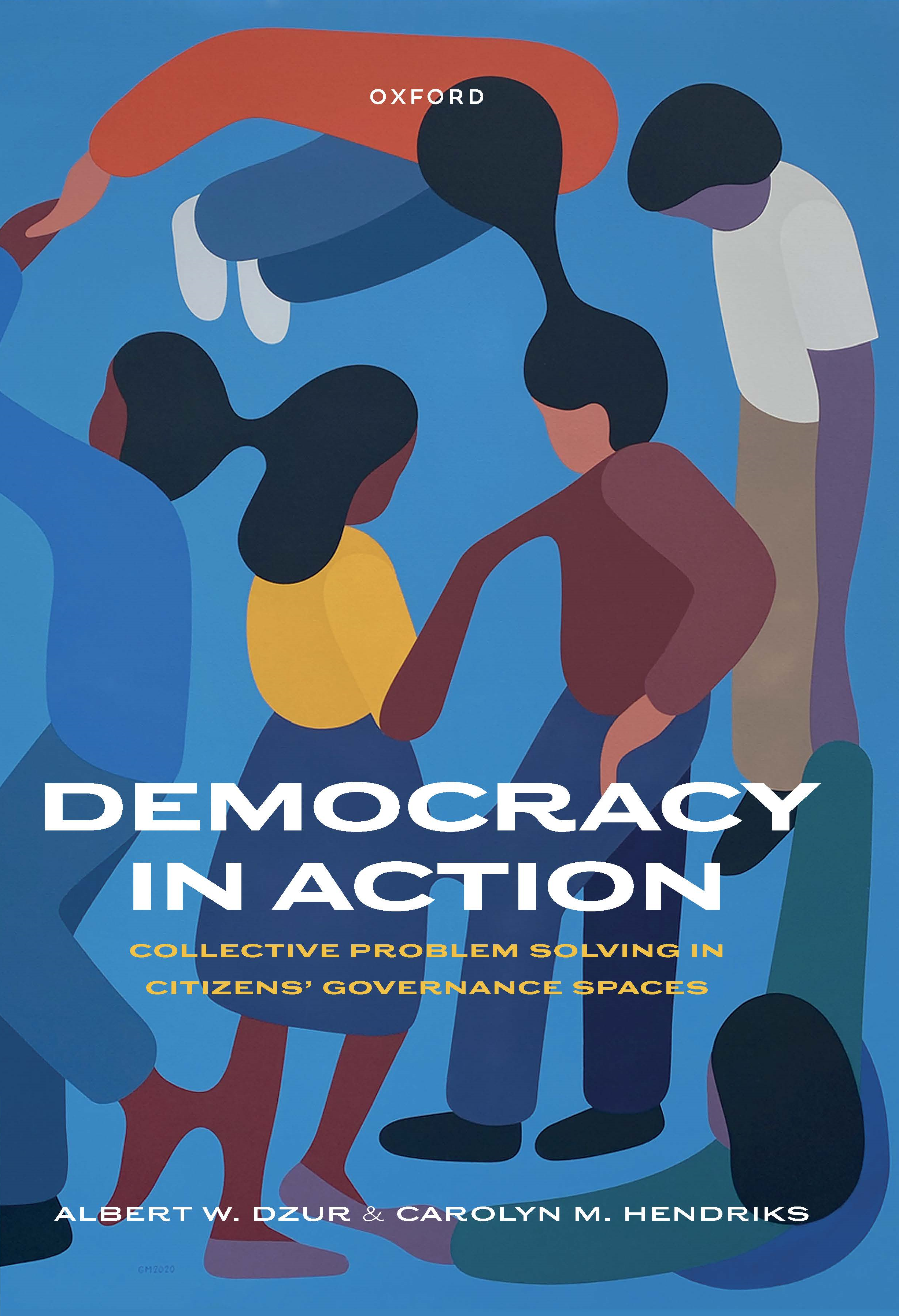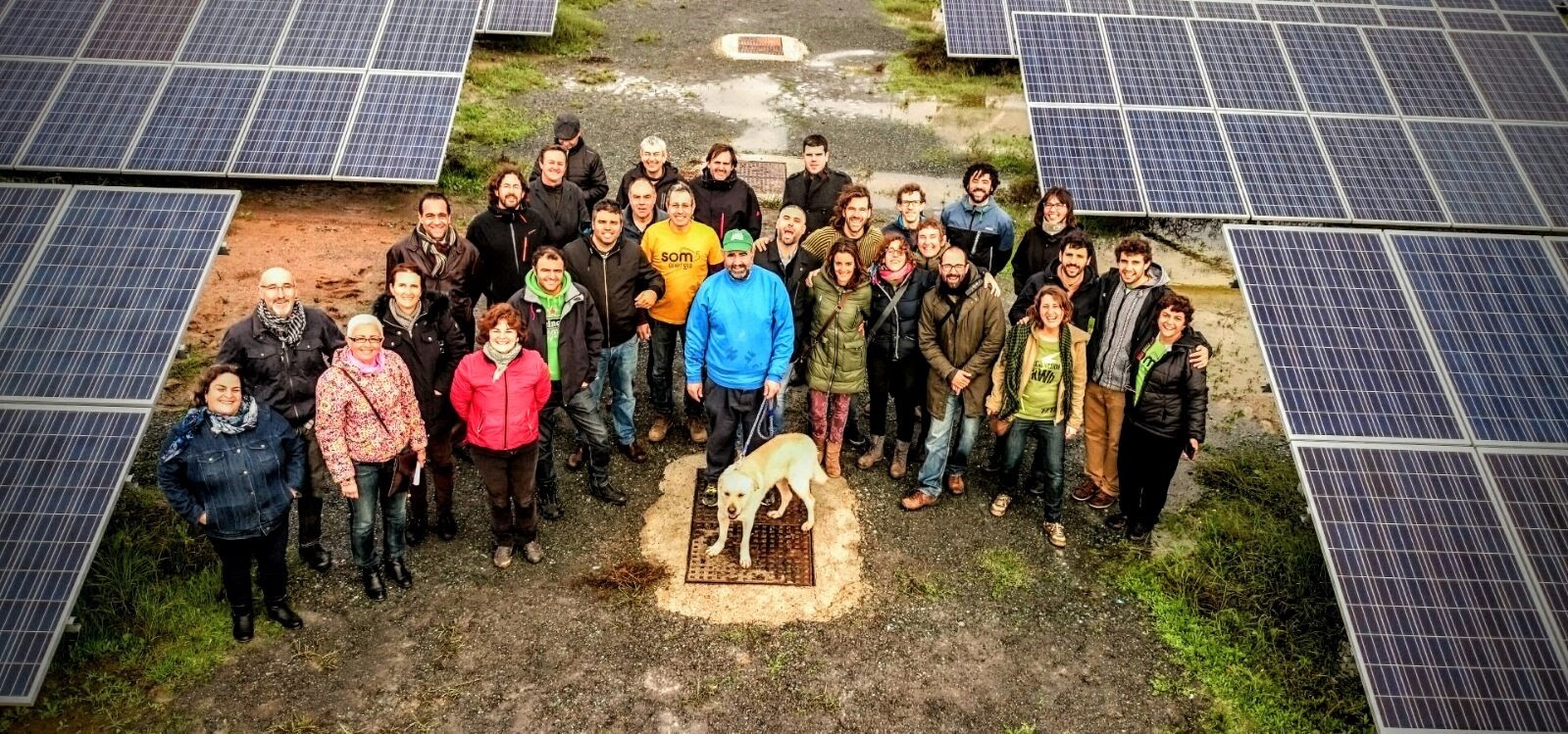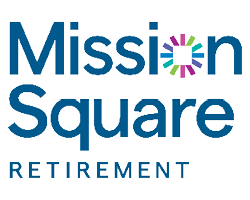By Albert W. Dzur and Carolyn M. Hendriks
Editor’s note: This article is based on the authors’ new book Democracy in Action: Collective Problem Solving in Citizens’ Governance Spaces (Oxford University Press: 2025), where references to relevant scholarship can be found.

Introduction
In the past few months citizens of all persuasions have been involved in the democratic process through campaigning and voting. Others have taken to the streets to protest. Outside the spotlight of elections and protests, however, many citizens continuously engage in democratic systems – often in ways that are overlooked. This is especially the case for self-organized citizens’ groups that form to address social problems such as food insecurity, elder care, substance recovery, or renewable energy. In such initiatives, citizens engage in bottom-up practical problem-solving, and this, we argue, represents a distinct form of participation that is not captured by terms such as protesting, activism, community organizing, mutual aid or co-production.

For nearly a decade we have studied such citizens’ groups active in diverse policy domains and countries to better understand why citizens self-organize and lead collective problem-solving efforts, what governance work they undertake and how they do that work. We find that citizens in these efforts discover practical – and often highly experimental and effective – ways to tackle complex social problems. In contrast to the strategies used in social movements and formalized community organizing, citizens in these initiatives often work congruently alongside market and government actors.
Those of us concerned about democratic conditions today have much to learn from the nimble, innovative, participatory, and practical governance initiatives that citizens are creating and leading. We caution, however, that such groups hold democratic risks as well, particularly with respect to inclusion, equality, and effective governance.
Spaces of citizen-led problem solving
In the early 2000s, for example, a group of Baltimore residents began meeting to discuss how their newly established Community Conferencing Center would use restorative justice practices.1 They wanted to work with the local community by offering alternative ways to defuse interpersonal strife, ensure neighborhood safety, and reduce future harm. Ten years later, across the Atlantic a group of 150 citizens in north-east Catalonia was putting together plans to create Som Energia—a community cooperative to produce affordable renewable energy for households in their region.2 Around the same time, in Port Kembla, an industrial seaside town south of Sydney, Australia, a group of citizens was setting up a community enterprise, Tender Funerals, to offer low-income people access to affordable and personalized funeral services.3
From the outside these might appear to be the kind of community organizing or charity work citizens’ groups have done throughout the ages. Yet when one takes a closer look at how they emerge and what they do, one sees a particular mode of citizen engagement that deserves fuller attention by anyone interested in understanding contemporary democracy. We label these grassroots efforts citizens’ governance spaces.
In these spaces, citizens define the problem and rethink it; develop and experiment with feasible solutions; generate knowledge and networks; and evaluate and refine their approaches.4 While many begin small, they can become impactful policy interventions. Baltimore’s Community Conferencing Center has diverted felony and misdemeanor cases from the juvenile courts, with judges inquiring into how they can adopt more restorative justice programs. Som Energia has defied Spain’s oligopolist energy sector by producing, developing, and supplying small-scale affordable electricity from renewable sources. Tender Funerals has disrupted Australia’s profit-driven funeral industry by offering personalized, affordable, and human-centered funeral services.
Citizens’ governance spaces are of course not new, but they have been on the rise since the early 2000s across diverse sectors and countries in response to economic, technical, political, and social forces. Depending on the context, citizens have felt driven to self-organize to fill governance voids left by inadequate or declining public services; for example, brought about by the marketization of welfare systems, economic crises, and socio-demographic pressures. When the global COVID-19 pandemic took hold in 2020, the media raised the public profile of local self-organizing groups providing food and care for those in need.5
Citizen-led problem solving has also been actively promoted and explicitly championed by government directives, for example in the Netherlands, that call on communities to take responsibility and use their own initiative and ingenuity to address collective problems. These spaces are celebrated by global institutions such as the Organization for Economic Cooperation and Development (OECD) and the World Bank because of their capacity to foster bottom-up forms of social entrepreneurship and innovation. As governments around the world deal with more frequent and more severe disasters such as wildfires, floods, and cyclones, the vital roles of citizen-led efforts in emergency response and disaster recovery are being increasingly recognized.
Defining Characteristics of Citizens’ Governance Spaces
Our research of over 30 diverse cases from around the globe identifies that citizens’ governance spaces are typically: 1) led and driven by citizens, who 2) undertake practical governance work to address a collective issue, 3) in innovative, experimental, and disruptive ways, 4) by engaging inclusively with affected publics, and 5) by working autonomously and congruently with relevant state, market, and civil-society organizations.6
Led and driven by citizens
Citizen spaces emerge from civil society through the actions of everyday people and are wholly independent (at least initially) from state or market support. This self-driven aspect differentiates these participatory spaces from social innovation projects that are seeded and propelled by solo “high value” entrepreneurs, corporations, or philanthropic organizations. In citizens’ governance spaces the problem solving begins through the interventions of citizens themselves, who self-organize to address a problem, and then drive and lead the collective effort by bringing other citizens along with them.
Citizens instigate problem-solving spaces for a variety of reasons. For example, they might self-organize a group or project because they believe traditional state organizations have withdrawn from or failed to address a complex, persistent or emergent public problem, such as the citizens in Baltimore concerned about both neighborhood crime and conventional criminal justice responses. In some contexts, the state may be absent or weak, so there is no alternative other than for citizens to step in. Market failure can also drive citizens as was the case for Tender Funerals, which now offers affordable and individualized funeral services disrupting Australia’s privatized funeral sector. Citizen spaces can also emerge to address holes not adequately filled by conventional civil-society organizations. For example, some citizens self-organize to offer services to highly marginalized groups that might be stigmatized or turned away from professionalized charities, such as the homeless, drug users, or victims of violence.
Most citizen spaces begin as small-scale experiments or local initiatives. Typically, a group of citizens starts a practically focused project with the aim of tackling a particular collective problem—for example, food waste, mental health, homelessness, opioid addiction, repeat crime, or the production of clean energy. Citizens leading a governance space often start in a small way to test their idea; for example, they offer an act of kindness, set up a local project, or start an online group. In these early days, citizens work their way into the problem; they collect information and start tinkering and experimenting with different practical options.
At some point the citizens leading the initiative might decide to formalize into a group, organization, movement, or enterprise. To widen the governance space, citizen-leaders typically need to find more leaders, especially those with time and energy as well as relevant expertise, skills, and resources. Citizen-leaders often do this by leveraging their personal networks and trust in the community to ask people to join in the effort. Some make use of social media and social messaging platforms, such as WhatsApp, to connect and mobilize others to join their problem-solving effort. Others might attract participants by establishing a website, holding a community workshop, or running fundraising or crowd funding events. In time, these small practical efforts begin to generate impact, and this can attract interest in the community through local and social media, schools, and actors in relevant policy networks. In some cases, citizen-leaders are able to draw in funds and support from private and public sector agencies.
Undertaking and rethinking practical governance
Citizens in governance spaces provide public goods and services such as care, shelter, food, energy, environmental protection, conflict resolution, social order, and social welfare. We use the term “governance” to recognize how people in citizen spaces take on some of the most serious tasks confronting society without being invited and, indeed, under conditions where citizen action may have been actively discouraged by conventional civil society and government actors. “Governance” refers to the complex and networked processes through which state, private and non-state actors develop and deliver public goods and services. The collective work of citizens’ governance spaces also sometimes reconfigures conventional definitions of problems, solutions, and ways of working. They are not just doing places, where old and new governance work is taken up, they are also thinking places, where wrongs or inadequacies in current practices in the private, public, and civil-society sectors are confronted.
The governance work that citizens lead and enact centers on trying to address a complex public problem in practical ways. They identify and define the problem, form feasible plans, implement solutions, and make evaluations and refinements.
Innovative, experimental, and disruptive interventions
Citizens in governance spaces do not know the answers in advance. They tackle complex problems with unknown solutions and fluid governance pathways and find that they must revise and adjust both strategies and objectives as they go along. Typically, citizens in these spaces proceed into the unknown: they experiment as they go; take risks; learn about possibilities along the way; and sometimes upend established policy concepts and objectives. Indeed, our case studies reveal that citizens are not operating from a tacit community consensus on what needs to be done; instead, they are often sailing against the wind. Through their experimental work, citizens push boundaries and expose problems or inefficiencies in existing structures, community norms, and formal rules.
The rethinking of conventions and standard practices is at the heart of what most citizens’ governance spaces do. Citizens are typically wrestling with policy problems that are ill-defined, ill-structured, or even invisible, and that have a history of failed and sometimes stigmatizing official interventions. In contrast to many classic co-production projects where citizens are self-organized to generate solutions to discrete problems known in advance, in citizen spaces people are trying to address problems whose solutions are not well understood in advance of their action. Sometimes through their attempts at problem solving they stumble across other problems, for which they then develop solutions.
Engaging inclusively with affected publics
Citizens’ governance spaces are not just citizen-led; they are also open to currently and formerly marginalized citizens taking on productive roles. Many address complex problems that affect the dispossessed and marginalized, such as homelessness, law breaking, domestic violence, mental health, and addiction. They often innovate to include the poor, the elderly, the young, the addicted and formerly addicted, the disabled, in planning, organizing, and conducting their problem-solving work. Their goal is to work with—not work for or on—those on the margins.
Citizens leading these initiatives often reach out to these marginalized people, actively promoting equality and power-sharing. They recognize people’s interest in becoming more civically active—through peer-to-peer work, for example—once they get their lives stabilized. And if citizens have been given opportunities to be involved, they are better placed to provide solutions to similarly marginalized others. The small group of citizens that founded the Serenity Café in Edinburgh Scotland, for example, recognized that former drug and alcohol users were not natural joiners of community groups, especially given their history, social alienation, and suspicion of leaders. So, they focused on creating a social and supportive environment, via the Café, where former users could work, connect, and be empowered to help those vulnerable to drug abuse, such as young people. As the founders explain “The strengthening of individual social networks of support in turn creates and reinforces a sense of community, and the building of personal recovery capital contributes to and strengthens the collective recovery capital available to the community.”
People actively engaged in citizen spaces work experimentally on public problems in a collective fashion: they draw on skills, knowledge and entrepreneurship among their members, participants, and broader community.
Working autonomously and congruently with state, market, and civil-society actors
Citizen spaces emerge in response to failures or limitations of conventional state institutions and market or civil-society organizations—such as energy infrastructure, health support, courts and police, food distribution agencies and NGOs—to address public problems. Yet the citizens involved do not necessarily reject or take a stand against these institutions and organizations. Instead, they might choose to carve out a congruent governance pathway that is not in direct opposition to state officials, agencies, and departments and may in fact be in collaboration or coordination with them. Orange Sky Australia, a citizens’ governance space devoted to providing mobile laundries for homeless citizens, has formed partnerships with a range of government departments, religious groups, charity organizations, private donors, and corporations. OSA is not anti-government, nor is it co-opted by government and other elites. Instead, it is willing to work with state or non-state collaborators who support its mission, and this networked approach has enabled OSA to have significant reach and impact. In some other instances, citizens choose to work actively and directly with market actors, with the state actor having to catch up, as is often the case in community-led renewable energy initiatives.
Orange Sky Australia, a citizens’ governance space devoted to providing mobile laundries for homeless citizens, has formed partnerships with a range of government departments, religious groups, charity organizations, private donors, and corporations. OSA is not anti-government, nor is it co-opted by government and other elites. Instead, it is willing to work with state or non-state collaborators who support its mission, and this networked approach has enabled OSA to have significant reach and impact. In some other instances, citizens choose to work actively and directly with market actors, with the state actor having to catch up, as is often the case in community-led renewable energy initiatives.
Our research finds that citizens involved in these spaces would be less attracted to them if they were part of a state agency or traditional civil society organization but also if they were completely detached from them.
The “Good” and “Bad” of Citizen-led Governance
Some of the groups and initiatives we have studied push back against and evade norms, laws, and regulations that endanger or immiserate them. One can have a dramatically different view of how to work on the same social problem as another. Does this mean “anything goes” when it comes to a citizens’ governance space? Does its mere existence grant it democratic value? Or are some types of spaces more worthy of support than others?
Emphasizing their contribution to democratic competencies for citizens and governing institutions, we say that “good” citizens’ governance spaces:
- identify and respond to basic needs (including self-realization and recognition),
- increase democratic governance,
- empower people,
- improve governance processes,
- reproduce and spread to other locales,
- create and transmit knowledge.
“Bad” citizen governance practices thwart the above goals and aims. In addition, they condone or promote:
- coercion or the threat of physical force,
- deception and non-transparency,
- highly exclusionary or dehumanizing rhetoric,
- proselytization rather than dialogue and debate.
At the root of “bad” citizen governance is a refusal to treat certain groups of citizens as deserving of respect, as being equal members of political society. While racist, anti-Semitic, or Islamophobic motivations and practices are obvious examples of what “bad” citizen spaces look like, there are many others that regularly operate using the practices noted above.
There is reason to deplore rather than merely ignore bad citizens’ governance spaces such as “crisis pregnancy centers” that use deception and proselytization practices, militia groups that patrol the southern border of the United States and routinely use the threat of force, or groups nurturing hatred of others to attract members. They are “bad” citizens’ governance spaces, just as state officials operating in the same ways would be bad state officials: not because of their conservative ideology, but because their version of that ideology condones deception, violence, and hatred. A healthy civil society ought to weed these out through media scrutiny, market incentives, and disincentives, and even through state regulation.
Supporting Citizen-led Governance
How can practitioners in government agencies and in the not-for-profit and private sectors support and work with citizens’ governance spaces? There is no magic formula. These groups vary in their willingness and capacity to partner with state and non-state actors, and in the various types of support they might need. Some need funding; others require access to knowledge and networks, administrative flexibility, or capacity building. We suggest that when it comes to supporting citizen spaces, well-resourced state and non-state actors can be guided by the following principles.
Recognize what citizens’ governance spaces do and the value they bring
Policy practitioners must learn to recognize the distinct problem-solving work that citizens are undertaking and appreciate the value of their more informal, iterative ways of working, particularly in an era when there is low trust in formal institutions and fatigue with consultation. In contrast to conventional state-led participatory projects, citizen spaces provide opportunities for policy practitioners to connect with, and learn from, informal groups and networks within the community.
Support but not control
Although public governance actors often want to assist community-led approaches, their support can be ill-timed, ill-purposed, and paternalistic. Any policy settings or programs of support need to ensure that they do not unintentionally stifle informality, responsiveness, creativity, and agency of citizens. Support also needs to look well beyond financial matters, to thinking about how to build capacities in the governance system for citizen-led governance. This requires rethinking conventional approaches, both in the community and in the public sector. For example, public agencies often run programs for community groups to “build capacity” to “work with” government, for example via grant writing workshops. But more consideration needs to be given to building community capacity on how to strategically partner with diverse actors outside of government, such as in the private and professionalized not-for-profit sectors.
Trust and respect citizen autonomy and agency
Community-led problem solving thrives when relevant state, market and civil-society organizations are willing and able to get out of the way or, at most, take on a role as funder, facilitator, or coordinator. When formal state and non-state institutions let communities get on with solving collective problems, they support citizen autonomy and agency and enable citizens to work nimbly across sectors to find cross-cutting solutions. Supporting or partnering with a citizens’ governance space entails trusting that communities themselves can lead solutions. Most successful collaborations between citizen-led efforts and others occur when relevant actors respect the autonomy of citizen-led efforts, and there is limited expectation to institutionalize or formalize community-led action. Research on mutual aid groups during the COVID-19 pandemic found that reducing bureaucracy was crucial to collaboration. Trust means accepting that communities work in ways that are more informal, relational, and networked than formal state and market organizations. It also means enabling groups to work at small scales, resisting the temptation to encourage them to grow. It is often unhelpful to view citizen spaces as embryonic civil-society associations, or as local groups needing assistance to formalize, grow and scale up. Indeed, their informality, and local or small scale are central to their problem-solving capabilities.
Organic transparency and accountability
Actors in more formal organizations, whether located in the state, market, or civil society, want to know that citizen spaces are transparent about their activities and held to account for any public funds they have spent. But to apply conventional standards of transparency and accountability onto small grassroots groups places considerable administrative burden and strain onto citizens. Rather than try and formalize the informal, we suggest that the conventions and practices of accountability in public governance be rethought, particularly with respect to funding and reporting requirements. We saw glimpses of this kind of rethinking during the height of the COVID-19 pandemic where access to funds was made easier; for example, by offering flexible ways to fund local groups via existing community organizations.
Openness to critique
As noted above, core goals of citizens’ governance spaces include identifying and responding to basic needs, improving democratic governance, empowerment, and the creation and transmission of knowledge. Healthy citizen spaces are open to ongoing discussion about how well they are accomplishing these goals. They also have ways of addressing questions raised about their organizational process or work to make sure they are free of coercion, deception, and bias.
Knowledge and collective impact
Our research has shown that some of the more efficacious governance spaces have engaged in systematic knowledge-gathering, sometimes in partnership with universities and state agencies, to monitor the progress of their work. To address the valid concerns of academics and practitioners, attention needs to be paid not only to whether governance spaces are doing no harm but are also actually accomplishing their core social problem-solving aims.
Conclusion
Our research on citizens’ governance spaces reveals that there is much more to participation than meets the eye in contemporary societies where trust in institutions is in decline and popular perceptions of ineffective governance on the rise. Our work illuminates an important yet largely overlooked terrain of civil society wherein citizens self-organize bottom-up practical efforts to address complex collective problems. In these experimental—sometimes challenging and disruptive—governance efforts, citizens are willing to work with, and at a distance from, relevant state, market, or traditional civil-society organizations. As they navigate complex relationships with both state and non-state entities, they are generating practical lessons in doing democracy that could provide guidance for reformers in the coming decades. Some citizens’ governance spaces offer more useful lessons than others, but the first step towards learning is to start noticing them.
Albert W. Dzur is Distinguished Research Professor at Bowling Green State University and a National Civic Review Contributing Editor.
Carolyn M. Hendriks is a Professor at the Crawford School of Public Policy at The Australian National University. She researches and teaches democratic aspects of contemporary governance, focusing on participation, representation, inclusion, and listening.



